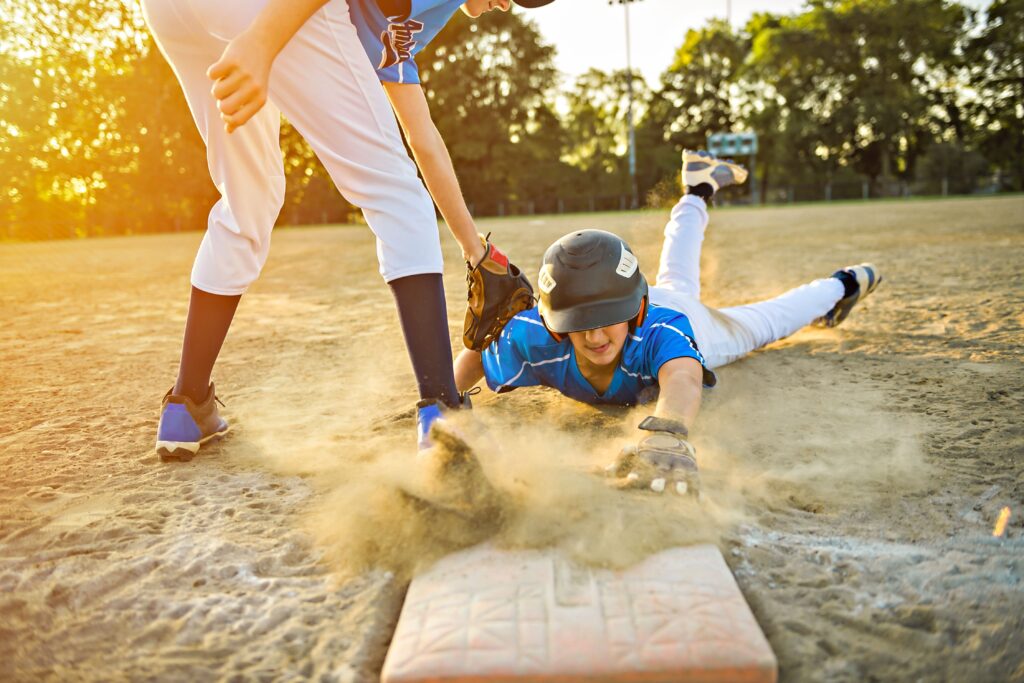When you're dealing with a sports injury in Vista, knowing the best recovery techniques can make all the difference in your healing process. You might find that individualized physical therapy plans, active recovery methods, and a balanced diet play essential roles in getting you back on your feet. But that's just the beginning. There are also innovative technologies and mindfulness practices that can enhance your recovery journey. Curious about how these techniques can specifically benefit you? Let's explore each one and uncover their unique advantages.
Physical Therapy Approaches
When it comes to recovering from sports injuries, physical therapy approaches play an essential role. You'll find that these methods help you regain strength, flexibility, and function in your injured area. Your physical therapist will assess your specific injury and develop a tailored plan that suits your needs. This individualized approach guarantees you're not just following generic exercises; instead, you're focusing on what truly benefits your recovery.
One common technique used in physical therapy is manual therapy. This hands-on approach helps alleviate pain and improve your range of motion. Your therapist might use techniques like joint mobilization or soft tissue manipulation, allowing you to experience relief and progress more quickly.
Another important aspect is therapeutic exercise. Your therapist will guide you through specific exercises designed to strengthen the muscles surrounding your injury. This not only aids in recovery but also helps prevent future injuries. You'll be encouraged to gradually increase the intensity of these exercises, guaranteeing you're challenging your body without overdoing it.
Additionally, modalities such as heat, ice, or electrical stimulation can be used to enhance your healing process. These techniques help reduce swelling and inflammation, making it easier for you to engage in your rehabilitation program.
Active Recovery Methods
While physical therapy lays a solid foundation for recovery, incorporating active recovery methods can further enhance your rehabilitation process.
Active recovery focuses on keeping your body moving without overexerting yourself. It helps maintain blood flow to your muscles, reduces stiffness, and promotes faster healing.
Here are some effective techniques you can try:
- Gentle Stretching: Light stretches can help maintain flexibility and reduce muscle tightness. Focus on areas around your injury to keep them limber.
- Low-Impact Cardio: Activities like walking, cycling, or swimming can elevate your heart rate while being gentle on your injured area. This keeps your body engaged without risking further injury.
- Foam Rolling: Using a foam roller can aid in muscle recovery by breaking down tight knots and improving circulation. It's especially useful for sore muscles after workouts.
- Yoga or Pilates: These practices emphasize controlled movements and breathwork, which can enhance flexibility and core strength, promoting overall body balance during recovery.
Nutrition for Healing
Nutrition plays an essential role in your recovery from sports injuries, as the right foods can greatly accelerate healing and restore strength. When you're injured, your body needs more nutrients to repair tissues and reduce inflammation. Focus on a balanced diet rich in whole foods, including lean proteins, healthy fats, and plenty of fruits and vegetables.
Protein is fundamental for muscle repair and growth, so make sure you're consuming adequate amounts. Lean meats, fish, eggs, dairy, legumes, and nuts are excellent sources. Aim for around 20-30 grams of protein in each meal to support your recovery.
In addition to protein, healthy fats like avocados, olive oil, and nuts play a significant role in reducing inflammation. Omega-3 fatty acids, found in fatty fish such as salmon and sardines, are particularly beneficial for recovery, so try to include these in your diet several times a week.
Don't forget about carbohydrates, either. They provide the energy you need to stay active and support your healing process. Whole grains, fruits, and vegetables are great choices that also offer essential vitamins and minerals.
Hydration is another key aspect of nutrition. Drinking enough water helps transport nutrients to your cells and keeps your joints lubricated. So, stay hydrated throughout your recovery.
Finally, consider consulting a nutritionist who specializes in sports medicine. They can help tailor a nutrition plan that meets your unique needs and supports your journey back to peak performance.
Mindfulness and Mental Recovery
Mindfulness can be a powerful tool in your recovery from sports injuries, as it helps you manage stress and anxiety, which often accompany physical setbacks. By focusing on the present moment, you can cultivate a more positive mindset that not only supports your healing but also enhances your overall well-being.
Here are some mindfulness techniques you can incorporate into your recovery routine:
- Breathing Exercises: Simple deep-breathing techniques can reduce anxiety and promote relaxation. Just a few minutes a day can make a big difference.
- Meditation: Daily meditation can help you clear your mind and gain perspective on your situation. Even short sessions can be beneficial.
- Visualization: Picture yourself fully recovered and back in action. This mental imagery can boost your confidence and motivate you through tough days.
- Gratitude Journaling: Write down things you're grateful for, which can shift your focus from what you've lost to what still brings you joy.
Incorporating mindfulness into your daily life can help you navigate the emotional challenges of recovery. It's about being gentle with yourself and acknowledging that healing takes time.
Rather than fixating on your injury, try to embrace the journey, allowing your mental resilience to grow alongside your physical recovery. Remember, your mind and body are interconnected, and nurturing one can greatly benefit the other.
Innovative Technologies in Recovery
How can innovative technologies transform your recovery from sports injuries? With advancements in medical technology, you're now equipped with tools that can greatly speed up your healing process.
One standout option is cryotherapy, which uses extreme cold to reduce inflammation and pain. By immersing yourself in a cryo chamber, you can enhance blood circulation and accelerate muscle recovery, allowing you to get back to your sport faster.
Another game-changer is electrical stimulation therapy. This technique uses electrical impulses to stimulate muscles, helping to reduce pain and promote healing. You can use portable devices at home, enabling you to stay on top of your recovery without frequent trips to the clinic.
Wearable devices also play a vital role in monitoring your progress. Smart gadgets track your movement, heart rate, and even muscle recovery, giving you real-time feedback. This data helps you and your healthcare provider adjust your rehabilitation plan more effectively.
Virtual reality (VR) therapy is emerging as a fun and engaging way to aid recovery. By immersing yourself in a controlled virtual environment, you can perform rehabilitation exercises while distracting yourself from discomfort. This not only boosts motivation but also enhances your overall experience during recovery.
Finally, telehealth services allow you to connect with specialists remotely, ensuring you receive expert guidance without leaving home.
With these innovative technologies, you're not just recovering; you're revolutionizing the way you heal from sports injuries.
Conclusion
Incorporating these five techniques can greatly enhance your recovery from sports injuries. By focusing on personalized physical therapy, engaging in active recovery, maintaining a nutritious diet, practicing mindfulness, and utilizing innovative technologies, you'll set yourself up for a quicker and more effective healing process. Remember, each step you take plays an essential role in regaining strength and flexibility. Stay committed to your recovery journey, and you'll bounce back stronger than ever!



